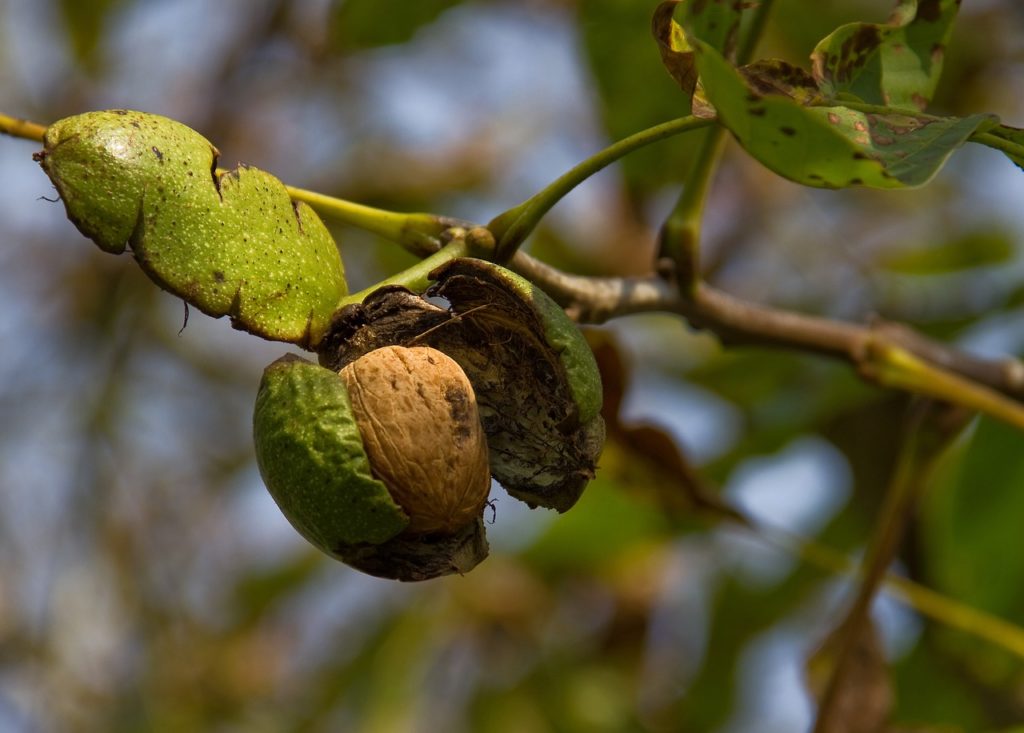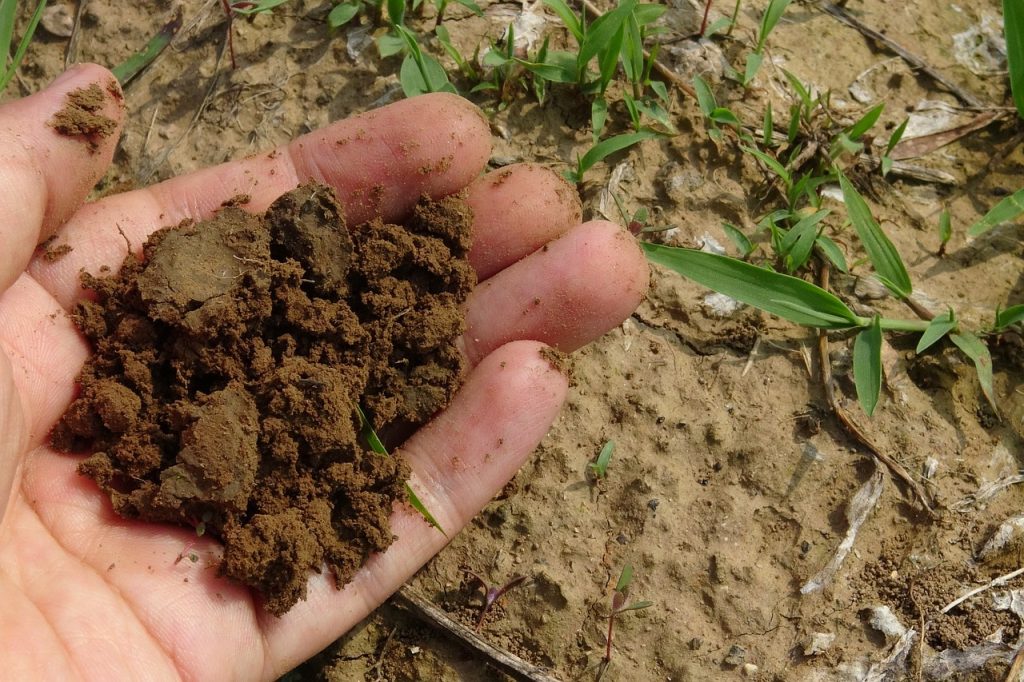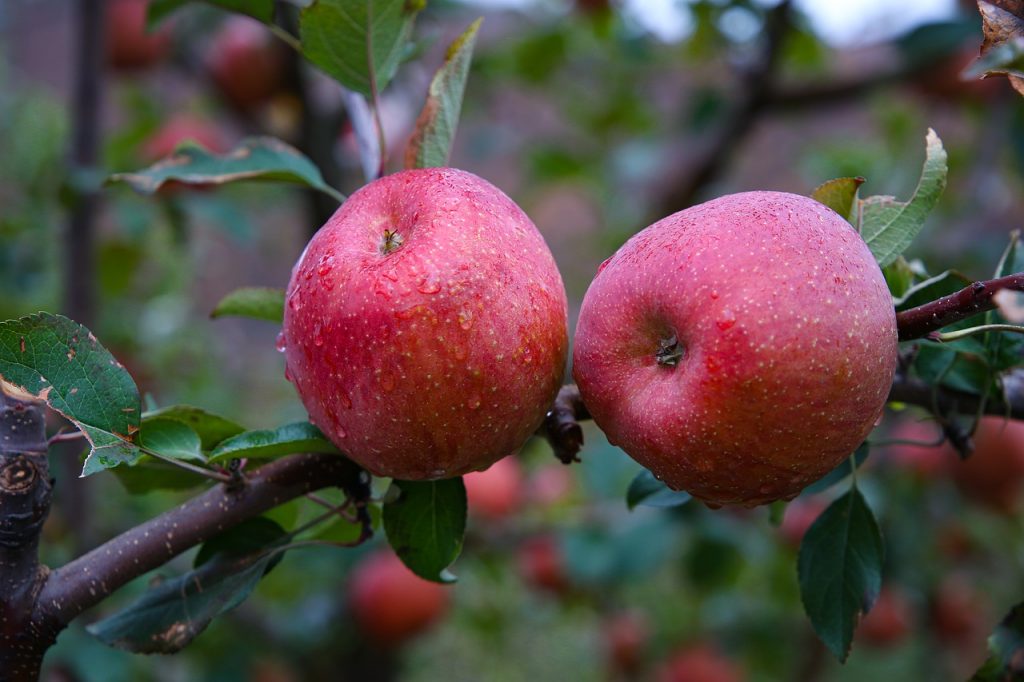The local, Kashmiri word for walnut is ‘doon’. Botanically, it is not a nut but is rather the seed of a drupe of trees of the genus Juglans. The two main species of walnuts include the Persian or English walnuts, which are native to Iran (Persia), while the black walnuts are native to eastern North America. As black walnuts have hard shells and their hulling characteristics aren’t very good, although flavourful, they are not cultivated on a commercial basis. Persian walnuts are grown on a large scale and various cultivars of this type have been developed.
India ranks eighth in the world in terms of total walnut cultivation, majority of which is grown in Jammu and Kashmir. The annual output of walnuts in J&K is over 2.5 lakh metric tons and the land under cultivation of walnuts is 89,000 ha. 98% of the total walnuts in India are grown in Jammu and Kashmir. Kashmiri walnuts are famous the world over and are of superior quality. Walnut varieties grown in Kashmir are Kagzi, Burzul and Wonth. Kagzi is a large nut with a thin shell, Burzul is medium-sized and wonth is hard and primarily used for oil extraction.
When is the walnut season in Kashmir? Walnuts start flowering in spring (March-April), after which the fruit grows quite fast but requires time to mature. The harvesting season of walnuts is autumn (Harud), which is from August to mid-October. Growers harvest walnuts around mid-September, after which they are sent to the markets for sale. The harvesting of walnuts is not easy since the trees are tall. The branches on which fruits have grown, have to be beaten with a stick. The nuts are washed out in a flowing stream and then sun-dried for 5-8 days.
In Kashmir, these dry fruits are mostly grown organically (without the use of chemical sprays and fertilizers). This is one factor due to which Kashmiri walnuts stand out from the rest. The slopes of the Himalayas, a temperate climate, and a well-drained, deep clay-loam soil is conducive for the growth of walnuts. Walnut trees bear the first fruit after 10-15 years of being planted. At the age of 20-25, the trees give good yield of walnuts. Walnut trees in the Kashmir Valley are known to give fruit till 100 years of age. Kashmiri walnuts have been immensely popular across India and abroad. However, with the walnuts from Chile, China and California entering the Indian market, the sales of Kashmiri walnuts have declined.
To resolve the threat to Kashmir’s walnut industry and boost the cultivation of walnuts in the country, mainly Kashmir, the Indian government has imposed an import duty of 132% on walnuts from USA and 110% on walnuts from Chile. Even after this, the dry fruit imports to India have not reduced. Before the Covid-19 pandemic, there was a rise in the cultivation of walnuts in Kashmir, however, during and after the pandemic, the sales suddenly dropped. India exported more than 3000 metric tonnes of walnuts worth 117 crores in 2015-16, while the exports in 2020-21 were about 1069 metric tonnes worth around 29 crores.
Kashmir was once the world’s second-largest cultivator of walnuts, while today it does not feature even in the first ten. Problems faced by the walnut industry of Kashmir are lack of infrastructure like transport, power supply and packaging facilities and the absence of dry fruit markets. Additionally, there are no strategies to boost the export of walnuts and with the introduction of GST, growers have to bear additional costs. Some of the main countries that imported Kashmiri walnuts were China, France, Netherlands and UK, among others. Countries like China cultivate their own walnuts while some other countries do not import the dry fruit from India now, due to which the walnut business in Kashmir has suffered major losses.
With efforts for improving the sales of Kashmiri walnuts and providing the growers with facilities for storage and packaging, the walnut industry may get back its lost glory and the walnut season in Kashmir will once again bring happy times for those working in the walnut cultivation sector.



